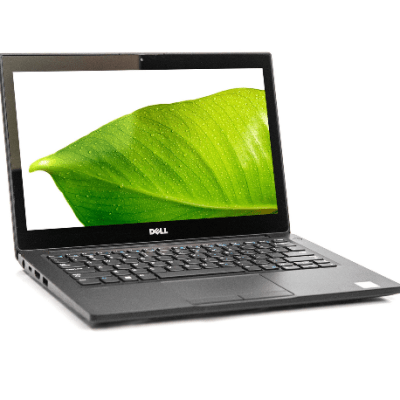Choosing the best laptop depends on your specific needs, budget, and use case. Here’s a guide to help you make an informed decision:
1. Identify Your Primary Use Case
The first step is to understand what you’ll mainly be using the laptop for. Different tasks require different types of hardware:
- For Basic Use (web browsing, email, word processing):
- Processor: Intel Core i3 or AMD Ryzen 3.
- RAM: 4GB or 8GB.
- Storage: 128GB or 256GB SSD.
- For Multitasking or Professional Work (coding, design, content creation):
- Processor: Intel Core i5/i7 or AMD Ryzen 5/7.
- RAM: 8GB to 16GB.
- Storage: 512GB SSD or more.
- Graphics: Dedicated GPU (e.g., Nvidia GTX or RTX) if doing graphic design, video editing, or gaming.
- For Gaming:
- Processor: Intel Core i7/i9 or AMD Ryzen 7/9.
- RAM: 16GB or more.
- Graphics: Nvidia GTX/RTX or AMD Radeon.
- Storage: 512GB SSD or more for fast loading times.
2. Determine Your Budget
Prices for laptops can vary widely based on features. Here’s a rough idea of what you might get at different price ranges:
- Budget laptops (NGN 100,000 – NGN 250,000): Basic tasks, web browsing, light work.
- Mid-range laptops (NGN 250,000 – NGN 500,000): Suitable for multitasking, light gaming, and professional tasks.
- High-end laptops (NGN 500,000 – NGN 1,000,000 or more): For heavy multitasking, gaming, video editing, and content creation.
3. Key Specifications to Look For
- Processor (CPU): This is the brain of the laptop. Intel Core i3/i5/i7 or AMD Ryzen 3/5/7 are popular choices. Faster processors (i7, Ryzen 7) are better for demanding tasks.
- RAM: 4GB is fine for basic use, but 8GB is ideal for most people, and 16GB is great for multitasking or demanding tasks.
- Storage: SSDs (Solid-State Drives) are faster and more reliable than HDDs. 256GB SSD is a sweet spot for most users, but you might need more (512GB or 1TB) for larger files.
- Display: A Full HD (1920×1080) display is ideal for most users. If you need sharper visuals (for design or video editing), go for higher resolutions like 4K.
- Battery Life: Look for a laptop that offers 8-10 hours of battery life if you’re constantly on the move.
- Graphics Card (GPU): If you’re gaming or doing graphic-heavy work (video editing, 3D rendering), a dedicated GPU like an Nvidia GTX or RTX is important.
4. Consider Portability and Build Quality
- Weight and Size: Lighter laptops are more portable but can be less powerful. Choose a 13-inch or 14-inch model if portability is essential. Larger models (15-inch or more) provide more screen space but are bulkier.
- Build Quality: Look for a durable design (metal build vs. plastic), especially if you’ll be carrying the laptop around a lot.
5. Check Connectivity and Ports
- USB Ports: At least 1-2 USB 3.0/3.1, plus USB-C for faster data transfer.
- HDMI: For connecting to external monitors or projectors.
- Wi-Fi: Wi-Fi 6 support is the latest standard for faster internet speeds.
- Keyboard: A comfortable keyboard with good key travel is important, especially if you type a lot. Backlit keyboards are a nice feature.
6. Operating System
- Windows: The most versatile and widely used. Best for gaming, professional work, and general use.
- macOS: Best for creative professionals, those in design, video editing, or software development, but usually more expensive.
- Chrome OS: Found in Chromebooks. Great for basic tasks, cloud computing, and long battery life, but limited in terms of software.
7. Read Reviews
- Research reviews and user feedback on platforms like Amazon, BestBuy, or tech websites like CNET or TechRadar. This helps you understand real-world performance and issues with the laptop.
8. Check for Warranty and Support
- A good warranty (1 year or more) and reliable customer support are essential, especially if you plan to use the laptop for business.
9. Future-proofing
- Consider getting a laptop that will serve you for several years, even if it’s slightly more expensive. For example, opting for 8GB of RAM instead of 4GB and a 512GB SSD instead of a 256GB one can provide you with better performance as software and apps become more resource-demanding.
Summary of Key Factors:
- For basic use: Core i3 or Ryzen 3, 4-8GB RAM, 128-256GB SSD.
- For gaming or content creation: Core i7 or Ryzen 7, 16GB+ RAM, dedicated GPU.
- For portability: Look for a 13” or 14” model with at least 8 hours of battery life.
- For budget-conscious buyers: Prioritize RAM and SSD over the CPU.
By understanding your needs and prioritizing key features, you can choose the best laptop for your budget and use case.

